
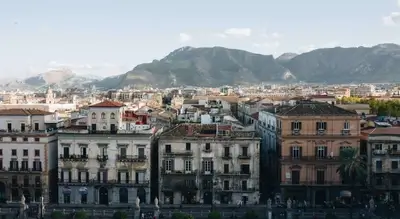
Do you know this? A subject sounds dry at first and then you are thrilled by it afterwards? That's how it is with Palermo's history. We take a look into the past and show you which developments have made Sicily's capital what it is today: safe and a melting pot of art and culture. With this prior knowledge in your luggage, you will discover the Mediterranean metropolis with completely different eyes.
by: Eugenio Rusignuolo | 03 Aug 2021
In the course of time, due to its strategically important base for seafaring and trade, many foreign conquerors have taken possession of the island and left their mark, which can be seen everywhere in the city today. The city has buildings from all periods, from Byzantine to Arabic, from Norman to Baroque.
The contrasting cultural influences of the rulers have become firmly imprinted on the cityscape and make up Palermo's charm. Above all, however, because the conquerors never managed to completely override the proud and rebellious character of the local population. The latter knew how to soften the inevitable cultural impact, embracing the respective art and architecture each time and skilfully integrating them into a total work of art.
Those who like it varied and lively will be thrilled by Palermo, the city that, like no other, is the crossroads of different cultures. Let's start the time machine and take a look at the different eras.
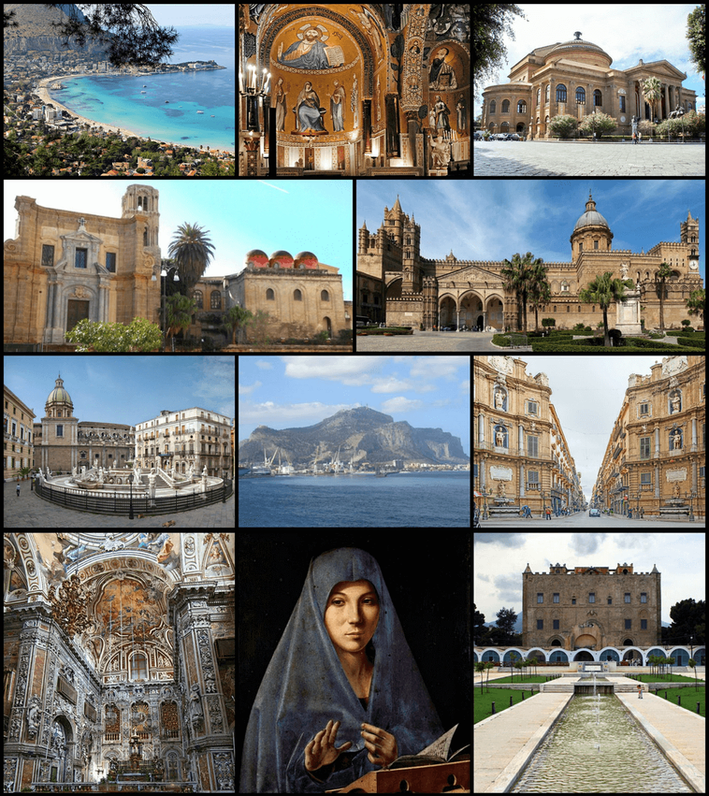
The Phoenicians, who specialised in trade and seafaring, founded Palermo as a port colony in the eighth century BC. From then on, Palermo was an important trading base and maritime hub, which explains why the city was fiercely contested in the later course of the centuries.
And even today, Palermo with its port is very much in demand, as it is currently being talked about again as part of the Chinese Silk Road. Did you know that Palermo was first christened "Ziz" by the Phoenicians, which means "flower" in English?
The Greeks failed in their attempts to conquer Palermo at the same time, even though they had already taken large parts of Sicily, and so here, in the north-western part of the island, Greek influences were largely absent.
Where the Greeks failed, the Romans were more successful in 254 BC. They conquered the city and gave it the name that the Greeks had already intended for it because of the extensive harbour bay between the two mountains: Panormos.
In Roman possession, under the rule of Emperor Augustus, the great-nephew of Julius Caesar, Palermo's population grew considerably and the city became an important artists' town. Overall, however, under Rome's occupation, Sicily degenerated into an insignificant province that was used as Rome's granary. The forests were almost completely cut down and the population suppressed until the Roman Empire fell in the 5th century.
In connection with the migration of peoples, the North African Vandal Empire was founded in 429. From 439, Sicily became the target of the Vandal raids, who had conquered Carthage on the Tunisian coast, which was strategically well situated for this purpose. Until 468, Sicily fell completely under their control until the island was bought back by a Western Roman officer in 477 and finally, after his murder, passed into the possession of the Ostrogoths.
Afterwards, the Byzantines conquered the island in 535 and made it a central trading centre. Besides Palermo, the other coastal cities also benefited from this. Nevertheless, the city continued to lose importance and in order to gain Sicilian independence, the governor of Syracuse, the capital of Sicily at the time, appealed to the Arabs.
In 827, the Arabs landed in Sicily after the governor's call for help and ended Byzantine rule, but instead of Sicilian independence, a 100-year Arab conquest of Sicily began, which ended in 925 with the conquest of Messina.
As a result, the Arabs made their mark on the island, for example by converting many churches such as the cathedral into mosques. However, Muslim rule did not mean oppression and poverty for Sicily, but extraordinary prosperity, a flourishing cultural life and religious tolerance.
Two-thirds of the Sicilian population was made up of Muslims in the mid-11th century, yet Christians were able to live according to their own laws, and in the north-east of the island the Greek Orthodox minority held its own despite Arab rule.
With new laws, the Arabs prevented the neglect of arable land and agriculture experienced an upswing under them, also thanks to new irrigation techniques. Under Muslim rule, the city, which was now renamed Bal'harm, literally experienced a new heyday, because new plants that we can still admire and appreciate in Sicily today were introduced at this time, such as lemon and orange trees, date palms, pistachios and melons.
Trade flourished due to the island's central position in the Arab Empire, and so Palermo, with a population of around 100,000, grew to become one of the largest cities in Europe after Constantinople (today's Istanbul) and Cordoba, becoming more and more of a prosperous economic centre and replacing Syracuse as the island's capital.
When we see buildings with Arab features in Palermo today, they do not come directly from the Arab era. Rather, under the later rule of the Normans, Arab artists and craftsmen decisively influenced building projects with their style, such as Palermo Cathedral. Traces of Arabisation can also be found in the names of districts such as Marasala or the local name "Mobibello" for Mount Etna.
Oh yes, and before we forget, the island's Arabic heyday also saw the development of new foods such as pizza, pasta and ice cream, for which Sicily and Italy are still world famous today.
Sicily was conquered by the Normans in 1130 after a 30-year war and elevated to a Norman kingdom. The open-mindedness, absolute religious freedom and tolerance that had already characterised the Arab era also characterised the Norman period and the Normans brought further prosperity and prestige to the island.
As mentioned, buildings from the Norman period still remain in Sicily today, showing how the styles of the Arabs, Byzantines and Normans blended into a symbiosis. The best-known example of this is Palermo Cathedral, which is one of the city's main attractions. But palaces such as the Palazzo Reale (Norman Palace) also still bear witness to the mixture of Arab, Norman and Byzantine styles.
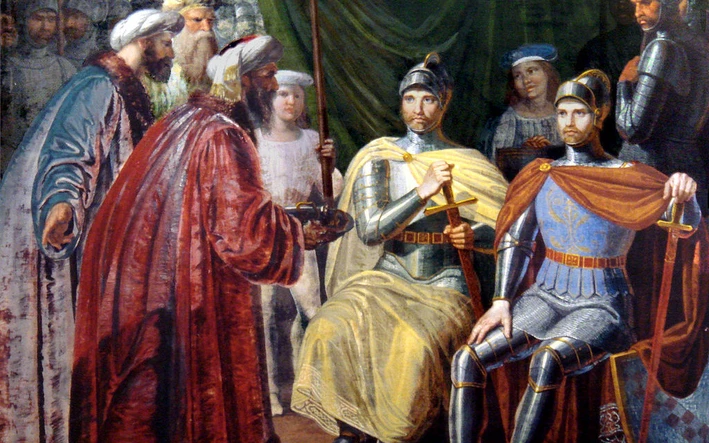
After the death of the last Norman ruler William II, who had no bodily heir, the rule over Sicily and Palermo passed to the German Hohenstaufen Henry VI, whose wife was entitled to inherit. Later, when Henry died, his son Frederick II took over the Hohenstaufen rule.
During his 50-year term of office, Frederick II (often called "stupor mundi" - "the astonishment of the world") founded a very modern-looking civil service with a well-functioning administration and promoted crafts and trade. He had a code of laws drawn up that was valid for southern Italy and Sicily until the 19th century.
Frederick II also continued to develop Palermo into a glamorous residence and further promoted cultural exchange. Thus he founded a Sicilian school of poets, in which southern French cultural and literary influences were mixed with the already existing Muslim, Norman and Greek ones.
Often overlooked, however, is the fact that Frederick II ruled with a hard hand and, for example, had about 20,000 Muslims deported.
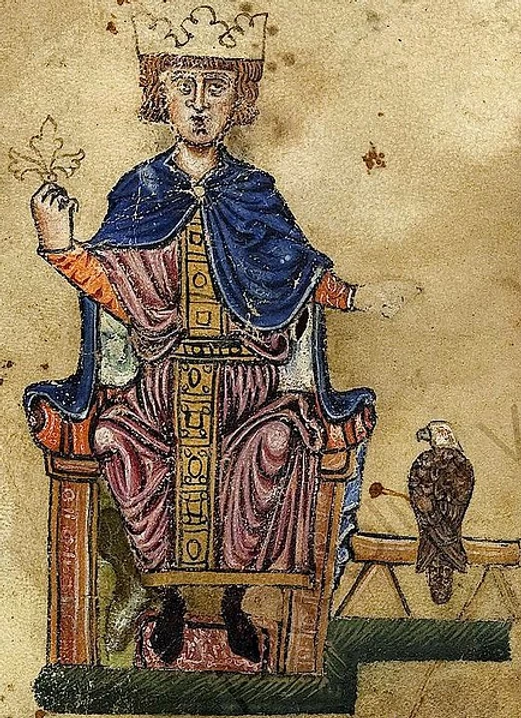
In 1250, Frederick II left the Kingdom of Sicily to his son Conradin. His execution in 1268 ended the rule of the Hohenstaufen and ushered in the reign of Charles I of Anjou, Count of Provence and brother of the French king. With his reign began the disintegration of Sicily under the French flag.
Sicily was incorporated into the Kingdom of Sicily-Naples and the capital was moved to Naples. The centralised administration established by Charles exerted high tax pressure on the Sicilians, which resulted in the first revolts of the population. For the ruling French, Sicily was a secondary country which they overran with brutality, corruption and oppression.
Finally, in 1282, there was the so-called "Sicilian Vespers", a popular uprising in which the citizens of Palermo rose up against Charles and drove him and the hated French from the island.
The circumstances that led to the Vespers are not clear. According to legend, a mother triggered the bloody riots of the Sicilian Vespers, in which 2,000 Frenchmen were murdered in Palermo alone. After her daughter was raped by a Frenchman, she ran screaming through the streets and thus caused the first massacre in Sicily.
Another tale says that the French sergeant Drouet molested a married Sicilian woman and was murdered by her husband. When the French comrades wanted to avenge Droute, the Sicilian crowd fell upon them.
After the French had been driven out, Peter III, King of Aragon, the last husband of Constance, was crowned King of Sicily in place of Charles. He also appointed himself King of Naples in 1504, and Spain then ruled Sicily for centuries, with a brief interruption due to the rule of Austria from 1713 to 1735. During the Spanish occupation, the Sicilian people experienced absolute poverty with famine and destitution.
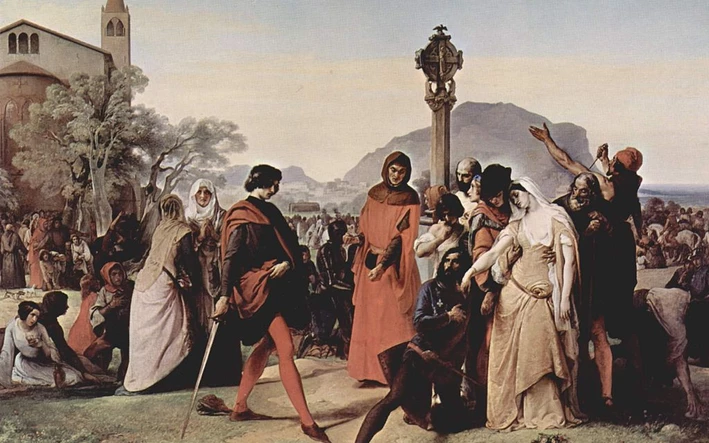
In 1860, Giuseppe Garibaldi, an Italian freedom fighter, landed in Marsala. He had set out south from Genoa with a thousand so-called Red Shirts ("Train of a Thousand") to conquer Sicily and Naples, which he finally succeeded in doing on 20 July with his victory at Milazzo. Today he is considered one of the most popular protagonists of the Risorgimento (the Italian unification movement).
On 26 October 1860, after Garibaldi had also occupied Naples and the end of the Kingdom of Naples was sealed, he recognised Victor Emmanuel II, King of Sardinia-Piermont, as "King of Italy" and Sicily, including Palermo, became part of the "Kingdom of Italy" from 1861.
Once again, the Sicilians entered a period of disadvantage because the government in the north had little understanding for the southern part of Italy and expressed this with a tax policy that structurally disadvantaged agrarian Sicily. As a result, there were repeated tensions and riots on the island, which were put down. Relations between the north and south of Italy have been marked by lasting mistrust ever since.
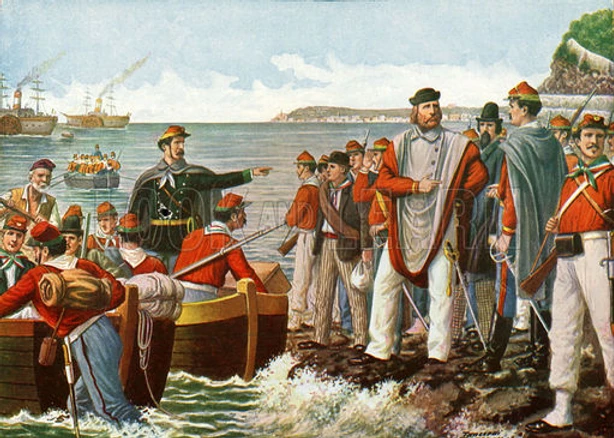
Since 1922, Italy had been ruled by the Mussolini regime, which aimed at an Italian empire. For the South, even under this regime, there was no fair alignment with the North and so the South remained structurally underdeveloped. Once again, Sicily was designated Rome's granary and the resulting expansion of grain fields benefited the large landowners but not the ordinary people, who were poorer than ever.
The Mafia, which by then had been established in Sicily and was gaining power, was fought by Mussolini, who sent the prefect Cesare Mori there for this purpose. Mori was called the "iron prefect" because of his tough action against the Cosa Nostra. Many Mafiosi had to emigrate to America as a result.
Italy, which was economically very weak on the whole, entered the Second World War on the side of Germany and had to endure severe destruction. As a result of the destruction of the old town, new settlements were built on the outskirts of the city, to which the former inhabitants of the old town moved.
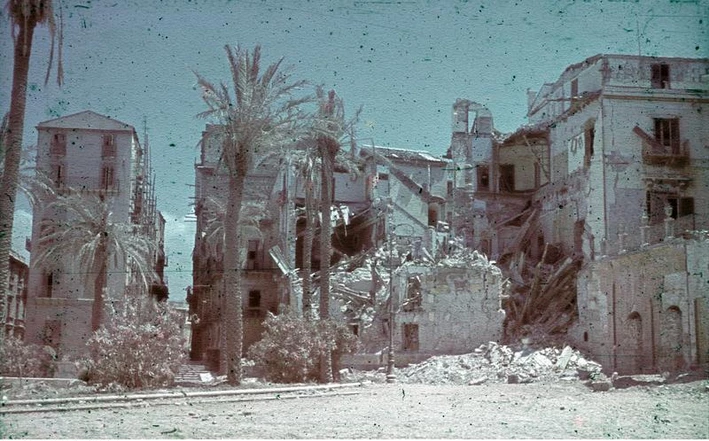
After the fall of Mussolini and the capitulation of Italy, the Mafiosi returned to Sicily. The Mafia subsequently grew stronger. In 1946, Sicily gained the right to self-government for the first time and became an autonomous region of the Italian Republic. Post-war Italy was again marked by economic decline and high unemployment, and many Sicilians emigrated, including an increasing number to West Germany.
In the 1980s, there was a mafia war in Sicily and Palermo was one of the most dangerous cities in the world. After the death of the two lawyers Giovanni Falcone and Paolo Borsellino, however, the tide turned and the government, with the support of the population, fought against the Mafia, whereupon crime subsequently fell to such an extent that today Palermo is no longer even among the 15 most dangerous cities in Italy. The city is breathing a sigh of relief today.
Palermo means "ideal refuge" in ancient Greek and today it lives up to its name more than ever. The different eras and their cultural diversity have left clear traces that inspire every visitor to Sicily. Nowhere else do the most diverse cultures, whether ethnic or religious, live together so peacefully and present such a harmonious picture as here.
Palermo is a city with soul, bursting with history. Once notorious, today it is the safest and perhaps the most beautiful city in Italy. It is a cosmopolitan, multifaceted and lively haven and therefore always worth a visit.
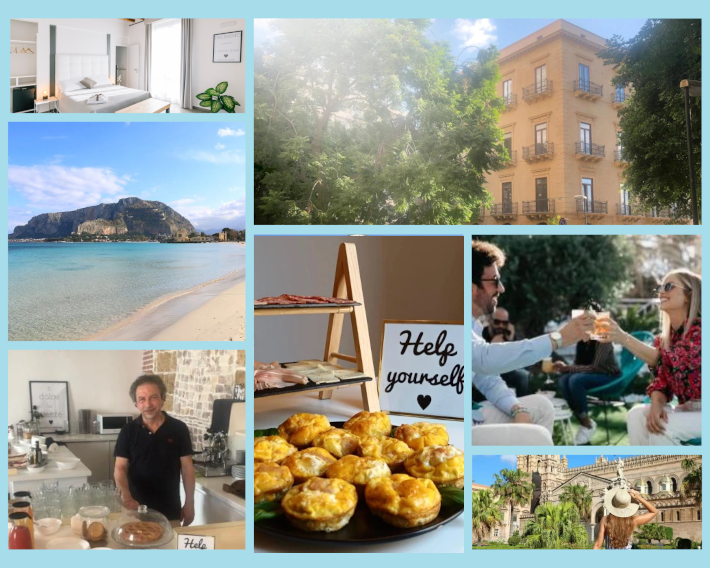
Many travellers want quality accommodation with an authentic atmosphere. At Boutique BnB Dolcevita we offer modern rooms and warm service so you can feel like a local for a while.
More info on the Boutique BnB Dolcevita